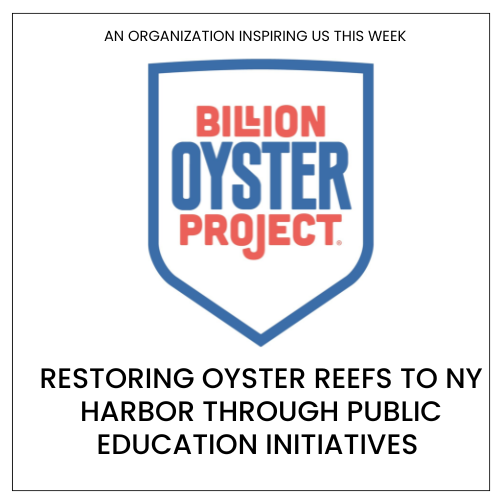CSO - Stories in Science
Lima Beans: An Epiphany
Dr. Mages: I look down at the seedlings in my hands. Then I say, “These seedlings are a bit like the children you’ll teach. Each will develop a little differently and each at a different pace.”

Wendy K. Mages
[su_boxbox title=”About”]Dr. Mages is an educator, researcher, and storyteller. She earned a master’s degree and a doctorate in Human Development and Psychology at the Harvard Graduate School of Education and a master’s in Theatre at Northwestern University. Dr. Mages is a faculty member at Mercy College and an affiliated faculty member of the Mercy College Center for STEM Education. She researches the effect of the arts on learning and development, and she performs at storytelling events in the US and abroad. To learn more about her research, teaching and storytelling, please visit her Mercy College Web page, Wendy Mages: Mercy College. [/su_boxbox]
[su_boxnote note_color=”#d9d8d6″]Story Key Ideas
- The wonders of everyday science
- Experimentation (the willingness to try something new) as a problem-solving strategy
- Appreciating diversity [/su_boxnote]

Prof. Wendy Mages
[dropcap]I[/dropcap] am standing in front of a classroom of aspiring kindergarten teachers presenting a hands-on demonstration lesson on “things that grow in a garden.” In this lesson, I am demonstrating how to conduct a read aloud of a picture book, called The Carrot Seed (Kraus, 1945), and we get to taste some raw carrots. We sing “Oats, Peas, Beans, and Barley Grow” and we get to touch oats, peas, beans, and barley, just as these new teachers will do with the young children in their own classrooms.
At first, when planning for this lesson, I was just going to suggest that teachers could extend the lesson by germinating lima beans and growing lima bean plants in their classrooms. This is what I have done every single time I’ve taught this lesson. However, I’m not sure my suggestion has ever convinced a single teacher to germinate a single lima bean.
To be honest, I’ve been feeling stuck, and stale, and rather ineffective. In an effort to engage all of the learners in my class, I’ve added all sorts of bells and whistles to my PowerPoint slides: literally bells and whistles, “Brrring” and “Wheee-whoo.” Still, some sit in the back secretly texting underneath their desks. Others sit silently, staring, rarely uttering a word. Sometimes it’s hard to tell if they’re shy but attentive, or asleep with their eyes open. Nonetheless, I persist in my quest to engage every learner in my classroom.
In preparation for class, I had purchased a bag of lima beans, so we could touch the beans for “Oats, Peas, Beans, and Barley Grow.” As I sat gazing at the whole bag of lima beans, I remembered my own experience germinating lima beans when I was a kindergartner.
I decided to germinate a few beans so I could bring the seedlings to class. I thought this might capture the attention of the novice teachers and inspire them to try this in their own classrooms.
I got on the Internet and discovered that things have changed since I was in kindergarten. It seems the days of beans wrapped in wet brown paper towels are long gone. Nowadays, you use plastic sandwich bags and damp cotton balls. Who knew?
I was hesitant to try this new method. I wanted to make sure this would work and I knew the brown-paper-towel method works just fine. Grudgingly, I realized that if I want these young teachers to try something new, I myself, a not-so-young teacher, should be willing to try something new too.
These seedlings are a bit like the children you’ll teach. Each will develop a little differently and each at a different pace.
I picked three beans out of the bag and soaked them overnight. The next morning, I transferred them to a transparent plastic sandwich bag with damp cotton balls and placed the bag in my window. Every day, I checked on my lima beans. The transparent sandwich bag was genius, as it made it easy to see everything that was happening to my little beans. In a few days, the first bean began to sprout. Then I noticed the second one sprouting. Finally the third one sprouted. I can’t explain why seeing each little shoot or root was so exciting, but I was fascinated by my three little lima bean seedlings. Before I headed to class, I carefully packed my little seedlings into my book bag, so they would all make it there safely.
In class, when we finish singing “Oats, Peas, Beans, and Barley Grow” and tasting the raw carrots, I take the seedlings out of my book bag. As I show the teachers my three seedlings, one of the teachers, Angela, who usually sits in the back of the class and almost never says anything, notices that the seedlings are not equally developed and asks, “Did you start germinating them on different days?”
“No, I started them on the same day,” I say. “When I picked the beans out of the bag, they all looked exactly the same. I put them in the same jar of water, and in the same plastic bag with the same damp cotton balls, but each is growing a little differently and each at a different rate.”
I look down at the seedlings in my hands. Then I say, “These seedlings are a bit like the children you’ll teach. Each will develop a little differently and each at a different pace.”
After class, I find myself unable to throw my little seedlings away. I bring them home and place them in a jar on my window sill. I continue to watch them grow and develop. They grow leaves, and flowers begin to blossom on their vines. I know this is what is supposed to happen (plant reproduction 101) but I don’t remember ever seeing lima bean blossoms before.
I am totally amazed by the unique potential inherent in each of the three little lima beans. Now that I have witnessed the wonders of each of these beans, I can no longer look at a bag of seemingly identical lima beans in quite the same way.
Reference
Kraus, R. (1945). The carrot seed. New York, NY: Harper & Row Publishers, Inc.
Cover photo is by Sarah Kaiser from Flickr | Some rights reserved
Metrics
Sessions
Total number of Sessions. A session is the period time a user is actively engaged with the page.
Visitors
Users that have had at least one session within the selected date range. Includes both new and returning users.
Page views
Pageviews is the total number of time the article was viewed. Repeated views are counted.
The CS Media Lab is a Boston-anchored civic science news collective with local, national and global coverage on TV, digital print, and radio through CivicSciTV, CivicSciTimes, and CivicSciRadio. Programs include Questions of the Day, Changemakers, QuickTake, Consider This Next, Stories in Science, Sai Resident Collective and more.

-
Civic Science Observer2 weeks ago
What are the objectives of the Neurotech Justice Accelerator at Mass General Brigham?
-
Civic Science Observer2 months ago
New survey explores what people in South Africa expect of publicly visible scientists – why it matters
-
Civic Science Observer2 months ago
Ecosystem building in action: Science Talk 2025 and the dynamic civic science conference landscape
-
Civic Science Observer1 month ago
Dear Colleagues: Now is the time to scale up public engagement with science






















